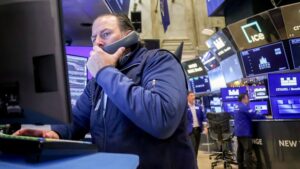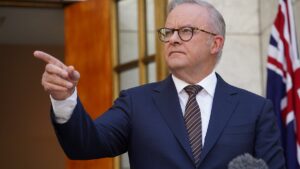
In a groundbreaking experiment, engineers at the University of Pennsylvania have successfully transmitted quantum signals over commercial fiber-optic cables using the same Internet Protocol (IP) that underpins today’s web. This pioneering effort, reported in the journal Science, demonstrates that delicate quantum signals can coexist with everyday online traffic on existing infrastructure. The team conducted their tests on Verizon’s campus fiber-optic network.
The core of this innovation lies in the Penn team’s development of a tiny “Q-chip,” which coordinates both quantum and classical data, effectively speaking the same language as the modern internet. This advancement could pave the way for a future “quantum internet,” which scientists anticipate could be as transformative as the initial advent of the online era.
The Mechanics of Quantum Networking
Quantum signals depend on pairs of “entangled” particles, so intricately linked that a change in one instantaneously affects the other. This property could enable quantum computers to connect and combine their processing power, facilitating breakthroughs such as faster, more energy-efficient artificial intelligence and the development of new drugs and materials beyond the reach of current supercomputers.
In a first for live commercial fiber, Penn’s experiment shows that a chip can not only transmit quantum signals but also automatically correct for noise, bundle quantum and classical data into standard internet-style packets, and route them using the same addressing system and management tools that connect everyday devices online.
“By showing an integrated chip can manage quantum signals on a live commercial network like Verizon’s, and do so using the same protocols that run the classical internet, we’ve taken a key step toward larger-scale experiments and a practical quantum internet,” says Liang Feng, Professor in Materials Science and Engineering (MSE) and in Electrical and Systems Engineering (ESE), and the senior author of the Science paper.
The Challenges of Scaling the Quantum Internet
The concept of quantum entanglement, famously illustrated by Erwin Schrodinger’s thought experiment involving a cat that is both alive and dead until observed, highlights the unique nature of quantum particles. Once measured, these particles lose their unusual properties, posing significant challenges to scaling a quantum network.
Robert Broberg, a doctoral student in ESE and coauthor of the paper, explains, “Normal networks measure data to guide it towards the ultimate destination. With purely quantum networks, you can’t do that, because measuring the particles destroys the quantum state.”
Coordinating Classical and Quantum Signals
To circumvent this obstacle, the team developed the “Q-Chip” (short for “Quantum-Classical Hybrid Internet by Photonics”) to coordinate classical signals, composed of regular streams of light, and quantum particles. “The classical signal travels just ahead of the quantum signal,” says Yichi Zhang, a doctoral student in MSE and the paper’s first author. “That allows us to measure the classical signal for routing, while leaving the quantum signal intact.”
This system functions like a railway, pairing regular light locomotives with quantum cargo. “The classical ‘header’ acts like the train’s engine, while the quantum information rides behind in sealed containers,” Zhang explains. “You can’t open the containers without destroying what’s inside, but the engine ensures the whole train gets where it needs to go.”
By embedding quantum information within the familiar IP framework, the team demonstrated that a quantum internet could literally “speak” the same language as the classical one, a compatibility crucial for scaling using existing infrastructure.
Adapting Quantum Technology to the Real World
One of the greatest challenges to transmitting quantum particles on commercial infrastructure is the variability of real-world transmission lines. Unlike controlled laboratory environments, commercial networks often experience changes in temperature due to weather, as well as vibrations from activities like construction and transportation.
The researchers developed an error-correction method that leverages the fact that interference to the classical header will similarly affect the quantum signal. “Because we can measure the classical signal without damaging the quantum one,” Feng explains, “we can infer what corrections need to be made to the quantum signal without ever measuring it, preserving the quantum state.”
In testing, the system maintained transmission fidelities above 97%, demonstrating its ability to overcome the noise and instability that typically destroy quantum signals outside the lab. Furthermore, the chip’s silicon construction and established fabrication techniques suggest it could be mass-produced, facilitating easy scaling.
“Our network has just one server and one node, connecting two buildings, with about a kilometer of fiber-optic cable installed by Verizon between them,” says Feng. “But all you need to do to expand the network is fabricate more chips and connect them to Philadelphia’s existing fiber-optic cables.”
The Future of the Quantum Internet
The primary barrier to expanding quantum networks beyond a metro area is that quantum signals cannot yet be amplified without destroying their entanglement. While some teams have demonstrated that “quantum keys,” special codes for ultra-secure communication, can travel long distances over ordinary fiber, these systems use weak coherent light to generate random numbers that cannot be copied, a technique effective for security but insufficient for linking actual quantum processors.
Overcoming this challenge will require new devices, but the Penn study provides a critical early step: showing how a chip can run quantum signals over existing commercial fiber using internet-style packet routing, dynamic switching, and on-chip error mitigation that work with the same protocols managing today’s networks.
“This feels like the early days of the classical internet in the 1990s, when universities first connected their networks,” says Broberg. “That opened the door to transformations no one could have predicted. A quantum internet has the same potential.”
This study was conducted at the University of Pennsylvania School of Engineering and Applied Science and was supported by the Gordon and Betty Moore Foundation (GBMF12960 and DOI 10.37807), Office of Naval Research (N00014-23-1-2882), National Science Foundation (DMR-2323468), Olga and Alberico Pompa endowed professorship, and PSC-CUNY award (ENHC-54-93). Additional co-authors include Alan Zhu, Gushi Li, and Jonathan Smith of the University of Pennsylvania, and Li Ge of the City University of New York.





